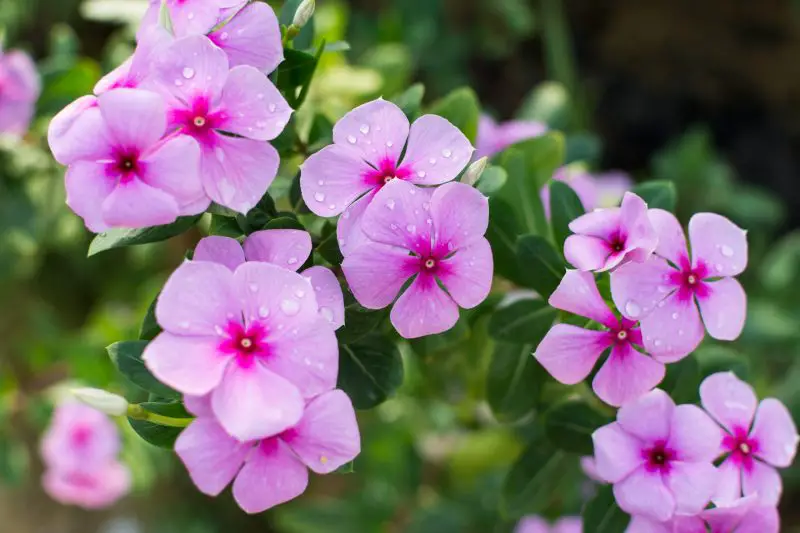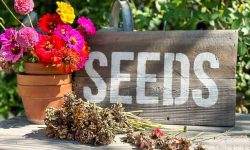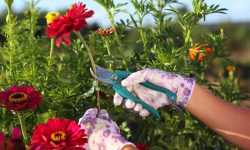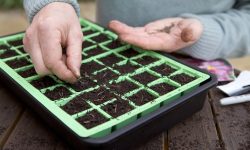Periwinkle is a versatile, low-maintenance plant known for its vibrant flowers and trailing growth habit. Propagating it allows gardeners to expand their garden, experiment with new varieties, and enjoy abundant blooms year after year. Whether using stem cuttings or seeds, understanding proper techniques ensures healthy plants and strong root systems.
Successful propagation depends on choosing healthy plant material, providing well-draining soil, maintaining consistent moisture, and offering appropriate light conditions. Avoiding common mistakes and monitoring growth carefully further enhances success. With patience and consistent care, periwinkle can thrive in garden beds, borders, or containers, adding color, texture, and long-lasting appeal to any outdoor space.
Understanding Periwinkle Plants

Periwinkle, or Vinca, is an evergreen plant prized for its durability and ornamental appeal. The most common species, Vinca minor and Vinca major, differ in size and growth habits. Vinca minor is a low-growing ground cover, ideal for small garden beds and shaded areas. Vinca major grows larger and spreads more aggressively, making it suitable for slopes and open landscapes. Both species thrive in various soil types and can tolerate partial shade, making them adaptable to different garden environments. Knowing the species helps determine the best propagation approach and spacing requirements for healthy growth.
This plant is characterized by glossy, dark green leaves and star-shaped flowers that bloom throughout the growing season. Flowers range in color from violet and purple to pink and white, adding vibrant color to gardens and walkways. Periwinkle’s dense foliage helps suppress weeds, conserve soil moisture, and prevent erosion. Its fast-growing nature means it can quickly fill empty spaces, but it also requires occasional pruning to maintain a controlled, tidy appearance. Understanding these traits ensures gardeners can manage spread while maximizing aesthetic appeal and plant health.
Periwinkle’s adaptability makes it highly versatile in landscape design. It performs well in shaded undergrowth, container gardens, borders, and slopes. Awareness of its growth patterns allows for informed propagation, whether through stem cuttings, division, or layering. Proper propagation produces robust plants with strong root systems and abundant flowers. By understanding periwinkle’s environmental needs, gardeners can achieve long-lasting beauty, sustainable growth, and a vibrant display across seasons while preventing overcrowding or invasive spread.
Why Propagate Periwinkle
Propagating periwinkle offers numerous benefits for both new and experienced gardeners. One major advantage is the ability to expand garden coverage efficiently. By creating new plants from existing ones, gardeners can fill empty spaces, prevent soil erosion, and establish dense, attractive ground cover. This approach saves money compared to purchasing multiple plants and allows for consistent quality, as the new plants inherit traits from the parent.
Propagation also plays a crucial role in rejuvenating older or weakened periwinkle plants. Over time, older plants may become sparse, less vigorous, or prone to disease. By propagating healthy cuttings or divisions, gardeners can replace declining areas while maintaining the overall appearance of the garden. New plants establish quickly and develop stronger roots, ensuring continuous growth and long-lasting blooms across seasons.
Another key reason to propagate periwinkle is experimentation and variety management. Gardeners can select specific plants with desired flower colors, growth habits, or disease resistance. This selective propagation helps maintain a garden’s aesthetic appeal and adaptability. Additionally, propagation enables sharing plants with friends or expanding landscaping projects without disrupting the ecosystem. Properly propagated periwinkle ensures healthy, vibrant plants that enhance soil stability, attract pollinators, and provide year-round visual interest. Understanding these benefits motivates gardeners to master propagation techniques for thriving, sustainable periwinkle plants.
Best Time to Propagate Periwinkle
Timing is essential for successful periwinkle propagation. The most favorable period is during the spring and early summer when the plant is actively growing. During this time, stems are tender yet strong, making them ideal for cuttings. Warm temperatures and consistent moisture encourage rapid root development, increasing the likelihood of successful establishment. Propagating during active growth ensures new plants develop quickly and thrive.
Autumn can also be suitable for propagation in mild climates. However, it requires careful attention to temperature fluctuations and shorter daylight hours. Cooler temperatures slow root formation, which may extend the time needed for young plants to establish. Gardeners should avoid propagation during extreme heat or frost-prone periods, as stress can reduce rooting success and weaken the cuttings. Choosing the right season aligns with the plant’s natural growth cycle, maximizing vigor and long-term survival.
Understanding seasonal conditions helps gardeners plan propagation effectively. Soil moisture, sunlight, and ambient temperature all influence rooting success. During spring or early summer, regular watering and moderate indirect light create optimal conditions. Selecting the best time also reduces the risk of pests and diseases that can affect young plants. By propagating periwinkle at the right season, gardeners ensure strong root systems, faster establishment, and abundant blooms in both current and future growing seasons. Proper timing is a critical step in cultivating healthy, thriving periwinkle plants for any garden or landscape.
Propagation Methods for Periwinkle
Propagation by Stem Cuttings
Stem cuttings are the most reliable method for propagating periwinkle. Begin by selecting healthy, semi-woody stems that are firm yet flexible. Avoid old, woody stems as they root slowly. Choose stems with active growth and multiple nodes, as roots develop from these points. Trim the cutting to about four to six inches in length and remove the lower leaves while keeping the top foliage intact. This helps reduce water loss and directs energy toward root formation.
Before planting, apply a rooting hormone to the cut end to encourage faster root initiation. Use a clean, sharp knife or scissors to prevent crushing the stem, which can reduce rooting success. Place the cutting into a pre-moistened, well-draining medium, such as a mix of peat and sand. Maintain consistent humidity around the cutting by covering it with a plastic dome or bag, and ensure the soil remains moist but not waterlogged. Bright, indirect light encourages photosynthesis without scorching the delicate leaves, providing the energy needed for strong root development.
Rooting typically occurs within two to four weeks, depending on environmental conditions. Once roots are well-established, gradually acclimate the new plant to normal garden conditions by removing the covering and adjusting watering frequency. Stem cuttings produce robust new plants that closely resemble the parent, making this method ideal for gardeners who want to expand periwinkle coverage or maintain uniform appearance. Consistent care during this phase ensures thriving, healthy plants with vigorous growth and abundant future blooms.
Propagation by Division and Layering
Division is an effective method for propagating mature periwinkle plants, especially those that have become dense or overcrowded. Begin by carefully digging up the plant, taking care not to damage the roots. Identify natural clusters with several stems and a healthy root system. Gently separate these clusters, ensuring that each section has sufficient roots to support growth. Replant the divisions in prepared soil with good drainage and adequate spacing to encourage strong development. Regular watering and light fertilization help the divisions establish quickly and recover from transplant shock.
Layering provides an alternative propagation method that does not require severing stems. Choose low-growing, flexible branches and bend them gently to the ground. Partially bury nodes in the soil while leaving the tip exposed. Over time, roots will form at the buried points. Once the new roots are established, the branch can be cut from the parent plant and transplanted to a desired location. Layering is particularly useful for expanding ground cover, stabilizing slopes, or rejuvenating areas without disturbing the parent plant’s growth.
Both division and layering offer the advantage of producing strong, healthy periwinkle plants with minimal risk. These methods allow gardeners to rejuvenate older growth, control plant density, and increase coverage efficiently. Proper soil preparation, consistent watering, and monitoring for pests ensure successful establishment. By mastering these techniques, gardeners can maintain vibrant, thriving periwinkle beds that bloom consistently and provide long-lasting ornamental value in the landscape.
Propagation by Seeds
Although less common, periwinkle can be successfully propagated from seeds. Fresh seeds give the highest germination rates and should be collected from healthy, mature plants. Before planting, clean the seeds carefully to remove any pulp or debris. Soaking them in warm water for several hours helps soften the seed coat, making germination easier and faster.
Use a light, well-draining seed-starting mix to prevent waterlogging while providing adequate support for delicate roots. Keep the soil consistently moist but avoid excessive watering, which can cause seeds to rot. Place the seed trays in a warm area with bright, indirect sunlight. Germination can take several days to a few weeks depending on temperature and seed freshness. Seed-grown periwinkle may bloom later than cuttings and can show slight variation in flower color or growth habit. This method is ideal for gardeners seeking genetic diversity or exploring new varieties. Once seedlings develop strong roots and several leaves, transplant them carefully into well-prepared garden beds for continued growth and vibrant blooms.
Caring for Newly Propagated Periwinkle
Newly propagated periwinkle plants require careful attention to establish strong roots and thrive. Whether grown from stem cuttings, division, or layering, young plants are particularly vulnerable to stress. Begin by ensuring the soil is consistently moist but not waterlogged. Overwatering can cause root rot, while underwatering slows growth and reduces plant vigor. Mulching around the base helps retain soil moisture and maintain a stable root environment.
Light is also critical for new plants. Provide bright, indirect sunlight to encourage photosynthesis without burning tender leaves. Avoid direct harsh sunlight during the initial weeks, especially for cuttings or newly transplanted divisions. Proper airflow around the plants reduces the risk of fungal infections and promotes healthy development. Inspect regularly for pests such as aphids or spider mites, which can weaken young periwinkle and inhibit growth. Early detection and treatment help ensure successful establishment.
Feeding young periwinkle plants supports vigorous growth and encourages early flowering. Use a balanced, slow-release fertilizer according to package instructions, ensuring nutrients are available without overloading the roots. Gradually acclimate plants to outdoor conditions if they were initially propagated indoors or in a controlled environment. Over time, as roots strengthen and stems grow robust, the periwinkle will develop resilience, enabling it to thrive in garden beds or containers. Proper care during this critical stage ensures healthy, long-lasting plants capable of producing abundant, vibrant blooms season after season.
Enhancing Growth and Flowering
Encouraging vigorous growth and abundant blooms in periwinkle starts with providing optimal conditions. Well-drained, nutrient-rich soil ensures roots develop fully and plants can absorb essential nutrients. Consistent watering supports steady growth, while avoiding waterlogging prevents root diseases. Bright, indirect sunlight is ideal, allowing the plant to photosynthesize efficiently without leaf scorch. Healthy foliage and strong stems are the foundation for prolific flowering.
Fertilization plays a critical role in promoting blooms. Apply a balanced fertilizer rich in phosphorus, which encourages flower bud development. Avoid excessive nitrogen, which can lead to leafy growth at the expense of flowers. Slow-release fertilizers or periodic liquid feeding during the growing season helps maintain nutrient availability. Pruning spent blooms and trimming overgrown stems directs the plant’s energy toward new bud formation. Regular deadheading extends the flowering period and maintains a tidy appearance, resulting in a more vibrant display.
In addition to care and feeding, environmental factors influence flowering. Mulching regulates soil temperature, conserves moisture, and suppresses weeds, reducing stress on the plant. Adequate spacing ensures proper airflow, reducing disease risk and giving each plant room to flourish. By combining proper soil preparation, fertilization, pruning, and environmental management, gardeners can maximize the ornamental potential of periwinkle. Consistent attention to these practices promotes healthy, vigorous plants capable of producing abundant, colorful blooms year after year.
Common Pests and Disease Management for Periwinkle
Preventing Common Pests
Periwinkle, though resilient, can attract pests like aphids, spider mites, whiteflies, and mealybugs. These insects feed on sap, weakening stems and leaves, reducing overall vigor, and sometimes transmitting diseases. Regular inspection is critical; examine both leaf surfaces, stems, and new growth for tiny insects, sticky residue, or distorted foliage. Early detection is essential, as infestations multiply quickly. Healthy, well-maintained plants are naturally more resistant to pests, so proper watering, light exposure, and nutrient management form the first line of defense.
Cultural and organic methods provide effective prevention. Remove fallen leaves, debris, and weeds near the base of plants, as they can harbor insects or eggs. Introducing beneficial insects such as ladybugs, lacewings, or predatory mites encourages natural pest control. For minor infestations, apply organic solutions like neem oil, insecticidal soap, or horticultural oils early in the day, ensuring leaves dry completely to avoid damage. Avoid overusing harsh chemical pesticides, which can disrupt the garden’s ecological balance, harm pollinators, and weaken the periwinkle’s defenses. By combining consistent monitoring, preventive hygiene, and organic control methods, gardeners can maintain robust, pest-free periwinkle plants that thrive and flower abundantly throughout the season.
Controlling Diseases Effectively
Periwinkle can fall victim to fungal infections, leaf spot, and root rot, especially under poorly draining soil or excessive moisture. Symptoms include yellowing or curling leaves, wilting, black spots, or stunted growth. Preventive care is key; ensure soil drains well and avoid water pooling around the roots. Overhead watering should be minimized to reduce leaf wetness, as fungal spores thrive in damp conditions. Good spacing between plants improves airflow, reducing humidity and limiting the development of disease. Regularly inspect leaves, stems, and root areas for early signs of infection, as prompt action prevents the spread and saves healthy growth.
If disease is detected, remove infected leaves and stems immediately and dispose of them properly. Organic fungicides containing copper or sulfur can be applied to control fungal outbreaks, following label instructions carefully. Adjust cultural practices such as watering schedules and soil amendments to prevent recurrence. Maintaining healthy plants through balanced fertilization, adequate sunlight, and consistent sanitation reduces susceptibility. Combining these methods ensures periwinkle remains vigorous, resilient, and capable of producing abundant blooms while minimizing the impact of pests and diseases.
Common Mistakes to Avoid and How to Solve Them
Overwatering and Poor Drainage
One of the most frequent mistakes in periwinkle propagation is overwatering. Young cuttings or divisions placed in soggy soil often develop root rot and fail to establish. Excess moisture limits oxygen availability to the roots, leading to weak or decaying plants. Signs include yellowing leaves, wilting despite moist soil, and soft or blackened stems.
To solve this, use a well-draining propagation medium such as a mix of sand, perlite, and peat moss. Water lightly and only when the top layer of soil feels dry. Elevate containers slightly to ensure proper drainage and prevent water from pooling at the base. Mulching can help maintain moisture without oversaturating roots. Regular monitoring and adjusting watering frequency based on environmental conditions ensures the plant receives enough hydration without risking root damage. Proper soil and careful watering create a healthy foundation for vigorous periwinkle growth.
Insufficient Light and Nutrients
Another common error is placing propagated periwinkle in low-light conditions or failing to provide adequate nutrition. Cuttings may stretch toward light, resulting in weak stems and sparse foliage. Lack of essential nutrients limits root development, flower potential, and overall plant resilience.
The solution is to provide bright, indirect sunlight during the propagation stage. Avoid harsh direct sun, which can scorch delicate cuttings. Once roots form, gradually introduce more light. Supplement with a balanced, diluted fertilizer or slow-release nutrients to support root establishment and early growth. Ensure a consistent feeding schedule while monitoring plant health. Combining optimal light and adequate nutrition promotes strong, compact plants capable of thriving once transplanted, leading to lush foliage and vibrant blooms in future seasons.
Using Damaged or Weak Cuttings
A frequent mistake is using cuttings that are damaged, diseased, or too weak to root successfully. Broken stems, yellowing leaves, or soft nodes reduce the chance of establishing a healthy plant. Weak cuttings often fail to produce roots, and even if they do, they grow slowly and may be more susceptible to pests and disease.
To prevent this, always select strong, healthy cuttings from a mature periwinkle plant. Look for firm, green stems with several nodes and no signs of discoloration or pest damage. Trim away any damaged or dead parts before planting. Using sterilized, sharp scissors or pruning shears ensures clean cuts and reduces infection risk. Additionally, prepare the cuttings by dipping them in rooting hormone to improve root initiation. By carefully selecting and preparing cuttings, gardeners can dramatically increase the success rate of propagation, ensuring vigorous, resilient plants that develop quickly and thrive in their new environment.
Neglecting Humidity and Temperature Requirements
Many gardeners fail to provide the right humidity and temperature for periwinkle cuttings. Low humidity causes leaves to dry and drop, while excessive heat or cold can stress the plant, slowing root formation or killing young cuttings. Improper environmental conditions are a common cause of propagation failure.
The solution is to create a controlled environment. Use a humidity dome, plastic cover, or misting system to maintain moderate moisture around the cuttings. Keep the temperature consistent, ideally between 20°C and 25°C, avoiding direct sunlight that can overheat the plant. Monitor regularly and adjust ventilation to prevent fungal growth. Proper humidity and temperature control help cuttings establish roots faster, maintain healthy foliage, and develop strong stems. Ensuring the environment meets these needs is essential for producing thriving periwinkle plants that will grow vigorously once transplanted.
Caring for Established Periwinkle
Watering and Moisture Management
Proper watering is crucial for established periwinkle plants. Overwatering can cause root rot, while underwatering leads to wilting, yellow leaves, and stunted growth. The soil should be consistently moist but well-draining, allowing roots to access oxygen while retaining enough water for healthy development. Monitor the topsoil regularly; if it feels dry to the touch, it’s time to water. Avoid leaving standing water around the base, which encourages fungal infections.
In addition to soil moisture, consider seasonal adjustments. During hot, dry periods, increase watering frequency, while reducing it during cooler months or after rainfall. Mulching around the base helps retain soil moisture, moderates temperature, and suppresses weeds that compete for nutrients. A consistent watering routine, combined with monitoring environmental conditions, ensures established periwinkle remains healthy, supports flowering, and maintains strong foliage. Maintaining proper hydration is foundational for long-term success and vibrant blooms.
Light Exposure and Fertilization
Periwinkle thrives in bright, indirect sunlight but can tolerate partial shade. Adequate light ensures strong, compact growth and encourages continuous flowering. Plants grown in insufficient light become leggy, weak, and less likely to flower abundantly. Observing light patterns in your garden helps determine the optimal planting location for mature periwinkle.
Fertilization complements light by providing essential nutrients for sustained growth. Use a balanced, slow-release fertilizer or a diluted liquid fertilizer every four to six weeks during the growing season. Avoid excessive nitrogen, which promotes leafy growth at the expense of blooms. Supplementing with phosphorus and potassium enhances root development and flower production. Proper combination of light and nutrition supports vigorous periwinkle, ensuring lush foliage and vibrant blooms throughout the season, creating a thriving, resilient garden display.
Enhancing Root Development
Developing a strong root system is essential for propagated periwinkle to thrive. Using a well-draining medium ensures that cuttings or seedlings do not sit in water, which can cause rot. A mixture of sand and peat moss is ideal, providing both moisture retention and aeration for root growth. Proper soil preparation at the start greatly influences the success of propagation and long-term plant health.
Applying rooting hormone to stem cuttings can significantly improve root initiation. This encourages faster cell division and strengthens the emerging roots. Maintaining consistent humidity around cuttings, either with a plastic dome or misting, prevents water stress and supports healthy development. Roots typically form within a few weeks, but monitoring daily is crucial to avoid drying out or fungal growth.
Temperature and light also impact root development. Bright, indirect light promotes energy production without scorching tender leaves. Keeping the environment between 20°C and 25°C ensures optimal growth conditions. Once roots are well-established and visibly strong, gradual acclimation to outdoor conditions prepares the periwinkle for transplanting. Strong roots result in vigorous growth, better flowering, and increased resilience to environmental stress, forming the foundation for a thriving garden plant.
Companion Planting and Landscaping Ideas
Periwinkle works beautifully in a variety of garden designs. Its low-growing, trailing habit makes it an excellent ground cover. Planting periwinkle alongside taller flowering plants creates layers of color and texture, enhancing visual interest. Choose companions with similar sunlight and soil needs to ensure both thrive.
Group periwinkle in clusters to create a lush, continuous carpet effect. Spacing is important to prevent overcrowding and ensure proper airflow, reducing disease risks. Incorporating periwinkle into borders, containers, or hanging baskets adds versatility, while its vibrant flowers attract pollinators like bees and butterflies, supporting overall garden health.
In landscaping, consider contrast with foliage colors and seasonal bloom times. Combining periwinkle with spring or summer flowering plants creates extended visual appeal. Its ability to suppress weeds and retain soil moisture adds functional benefits. Strategic placement and thoughtful companion planting maximize aesthetic value, ecological benefits, and plant health, making periwinkle a versatile and rewarding choice for any garden setting.
FAQ About How to Propagate Periwinkle
What is the easiest method to propagate periwinkle?
The easiest method is stem cuttings. Semi-hardwood cuttings root quickly and consistently in a well-draining medium. Using rooting hormone accelerates root development. Maintaining high humidity, moderate indirect light, and consistent moisture ensures a high success rate. Seed propagation is possible but slower and less predictable in bloom characteristics.
Can periwinkle be propagated from seeds?
Yes, periwinkle can be grown from seeds, but it is less common. Fresh seeds germinate better than older ones. Soak seeds in warm water for a few hours before planting in a light, well-draining medium. Seedlings may take longer to bloom and can vary slightly from the parent plant, making this method ideal for experimentation.
How often should I water newly propagated periwinkle?
Keep the soil consistently moist but not waterlogged. Overwatering can cause stem rot, while underwatering slows root development. Mist cuttings lightly to maintain humidity without wetting foliage excessively. Monitor the medium daily and adjust watering based on temperature, light, and soil type for optimal growth.
What are common mistakes when propagating periwinkle?
Common mistakes include overwatering, planting seeds too deep, exposing cuttings to direct sun, and using old or unhealthy plant material. Avoid using contaminated tools or soil, which can spread disease. Correcting these mistakes early improves root development and plant survival significantly.
When can I transplant rooted periwinkle into the garden?
Transplant once roots are fully developed, strong, and white. Gradually acclimate the plant to outdoor light and temperature to avoid stress. Choose a well-draining, nutrient-rich location and provide adequate water during the transition. Proper timing ensures vigorous growth and vibrant blooms.
Conclusion
Propagating periwinkle is both rewarding and straightforward when done correctly. By choosing healthy cuttings or fresh seeds, providing proper light, moisture, and soil conditions, and avoiding common mistakes, gardeners can enjoy thriving, vibrant plants. Consistent care and patience are key to strong root systems, lush growth, and abundant blooms. Understanding each propagation method, from stem cuttings to seed germination, allows gardeners to experiment and expand their garden successfully. With proper attention, periwinkle can become a long-lasting, colorful addition to any landscape, enhancing both aesthetic appeal and garden health year after year.






